ubuntuask.com
-
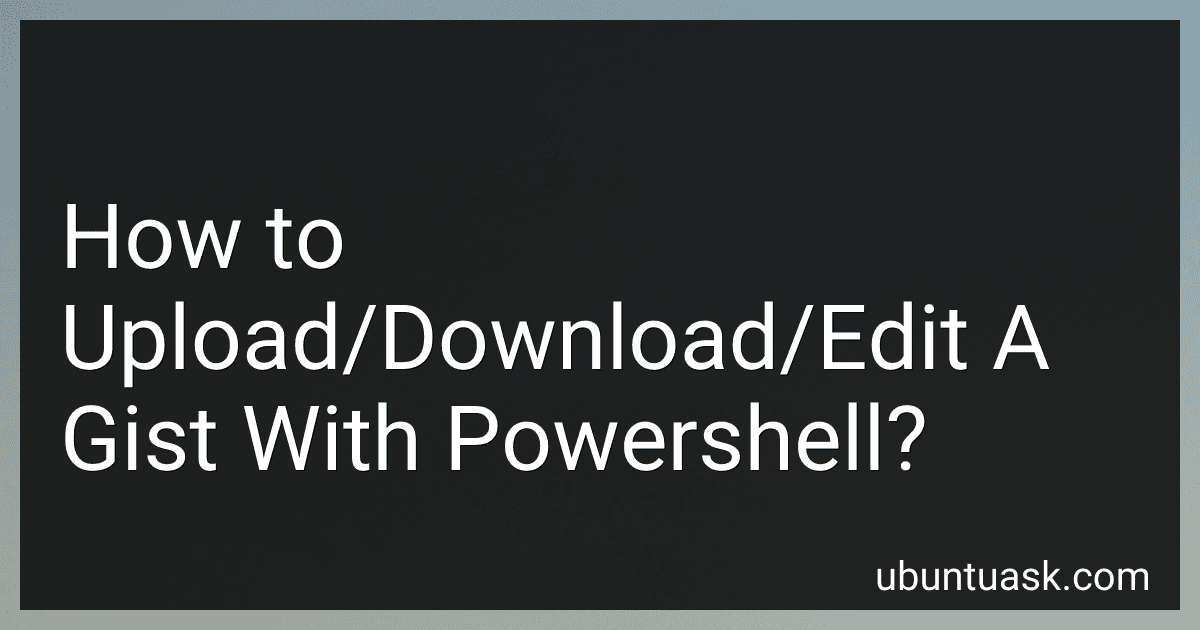 9 min readGists are a feature of GitHub that allow you to share snippets or small pieces of code. To interact with gists using PowerShell, you'll typically interact with the GitHub API, since PowerShell does not have native commands for GitHub operations. To upload, edit, or download a gist, you'll first need a GitHub account and a personal access token with appropriate permissions. With this token, you can construct HTTP requests to interact with the GitHub API.
9 min readGists are a feature of GitHub that allow you to share snippets or small pieces of code. To interact with gists using PowerShell, you'll typically interact with the GitHub API, since PowerShell does not have native commands for GitHub operations. To upload, edit, or download a gist, you'll first need a GitHub account and a personal access token with appropriate permissions. With this token, you can construct HTTP requests to interact with the GitHub API.
-
 9 min readTo load a custom DLL into PowerShell, you can utilize the Add-Type cmdlet, which allows you to define .NET types in PowerShell. First, ensure that your custom DLL is accessible from the PowerShell session, either by specifying the full path or by placing it in a directory that is included in the system's PATH. Once the DLL is ready, you can load it into your PowerShell session using the Add-Type cmdlet with the -Path parameter, indicating the path to the DLL file.
9 min readTo load a custom DLL into PowerShell, you can utilize the Add-Type cmdlet, which allows you to define .NET types in PowerShell. First, ensure that your custom DLL is accessible from the PowerShell session, either by specifying the full path or by placing it in a directory that is included in the system's PATH. Once the DLL is ready, you can load it into your PowerShell session using the Add-Type cmdlet with the -Path parameter, indicating the path to the DLL file.
-
 9 min readSelecting a table cell within a PowerPoint presentation using PowerShell can be accomplished by automating PowerPoint through its COM object model. First, you need to create a PowerPoint application object and open the desired presentation. Then, navigate to the specific slide and table. Once you have access to the table, you can select a specific cell by referencing its row and column indices.
9 min readSelecting a table cell within a PowerPoint presentation using PowerShell can be accomplished by automating PowerPoint through its COM object model. First, you need to create a PowerPoint application object and open the desired presentation. Then, navigate to the specific slide and table. Once you have access to the table, you can select a specific cell by referencing its row and column indices.
-
 6 min readTo subtract Excel cells using PowerShell, you first need to automate Excel with PowerShell scripts by utilizing the COM object model to interact with Excel. Start by creating an instance of the Excel application object, and open the desired Excel file. Access the specific worksheet where the cells you want to subtract are located. Then, read the values of the cells you wish to subtract by accessing their Value property.
6 min readTo subtract Excel cells using PowerShell, you first need to automate Excel with PowerShell scripts by utilizing the COM object model to interact with Excel. Start by creating an instance of the Excel application object, and open the desired Excel file. Access the specific worksheet where the cells you want to subtract are located. Then, read the values of the cells you wish to subtract by accessing their Value property.
-
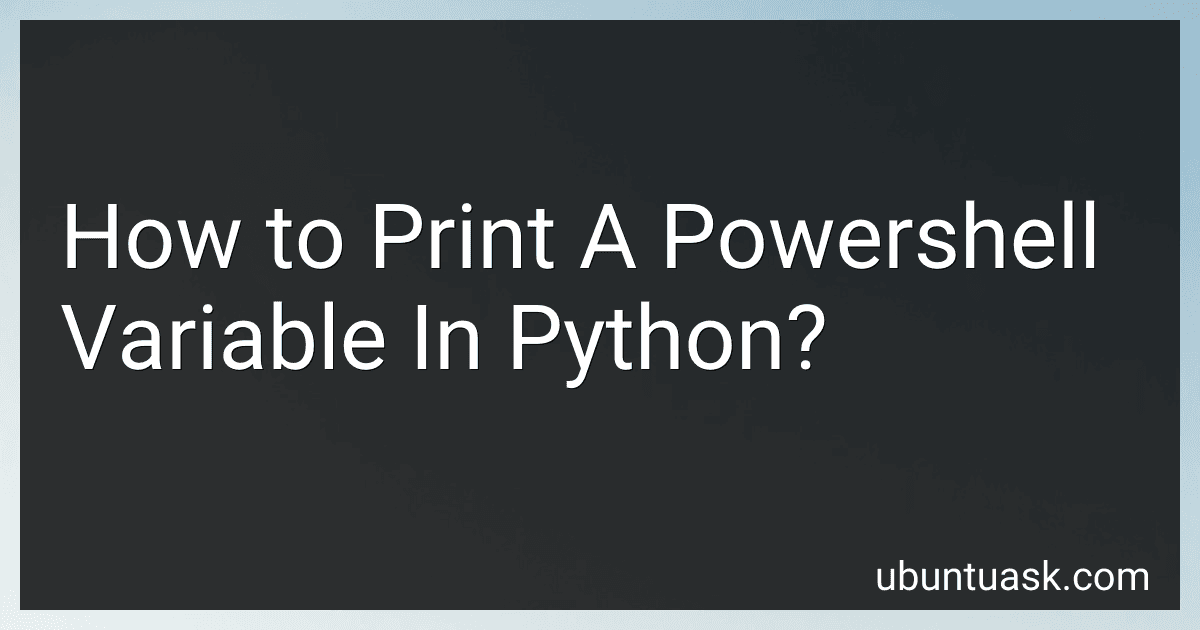 7 min readTo print a PowerShell variable in Python, you need to run a PowerShell script or command from within a Python script using a library like subprocess. First, you execute a PowerShell command that outputs the value of the variable, and then you capture and print this output in Python. For instance, you can use subprocess.run or subprocess.Popen to invoke PowerShell, passing it a command that echoes the desired variable.
7 min readTo print a PowerShell variable in Python, you need to run a PowerShell script or command from within a Python script using a library like subprocess. First, you execute a PowerShell command that outputs the value of the variable, and then you capture and print this output in Python. For instance, you can use subprocess.run or subprocess.Popen to invoke PowerShell, passing it a command that echoes the desired variable.
-
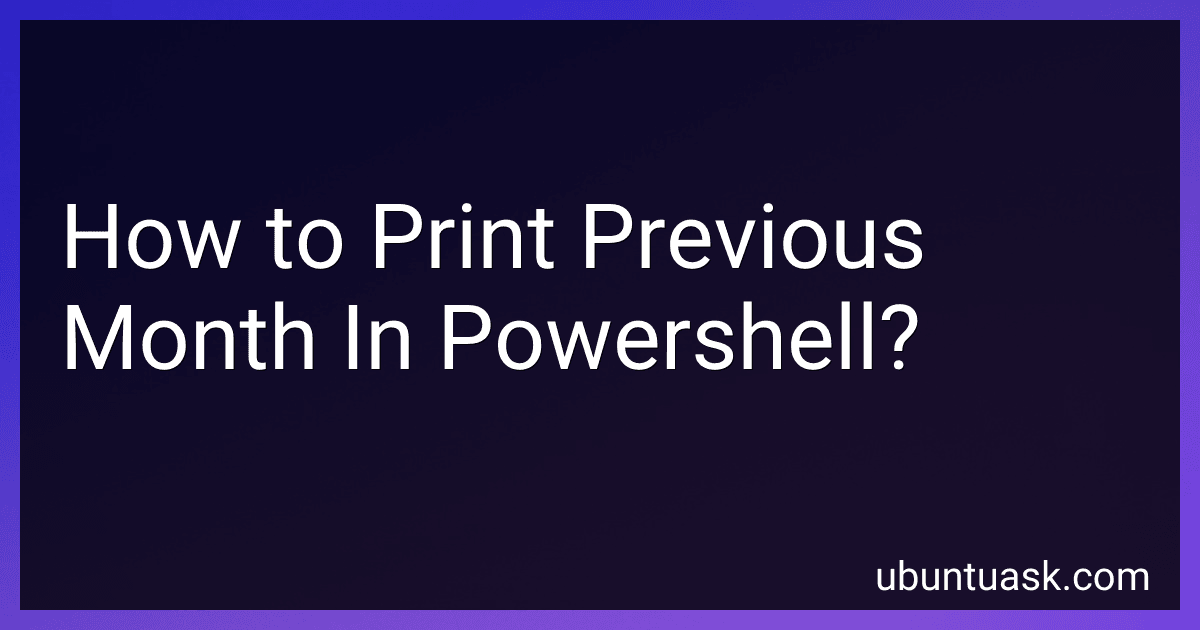 6 min readTo print the previous month in PowerShell, you can use the Get-Date cmdlet to obtain the current date and then manipulate it to determine the previous month. You would typically subtract one month from the current date. Here's a simple example: $previousMonth = (Get-Date).AddMonths(-1).ToString("MMMM") Write-Output $previousMonth This script utilizes the AddMonths method, passing -1 as the argument to go back one month from the current date.
6 min readTo print the previous month in PowerShell, you can use the Get-Date cmdlet to obtain the current date and then manipulate it to determine the previous month. You would typically subtract one month from the current date. Here's a simple example: $previousMonth = (Get-Date).AddMonths(-1).ToString("MMMM") Write-Output $previousMonth This script utilizes the AddMonths method, passing -1 as the argument to go back one month from the current date.
-
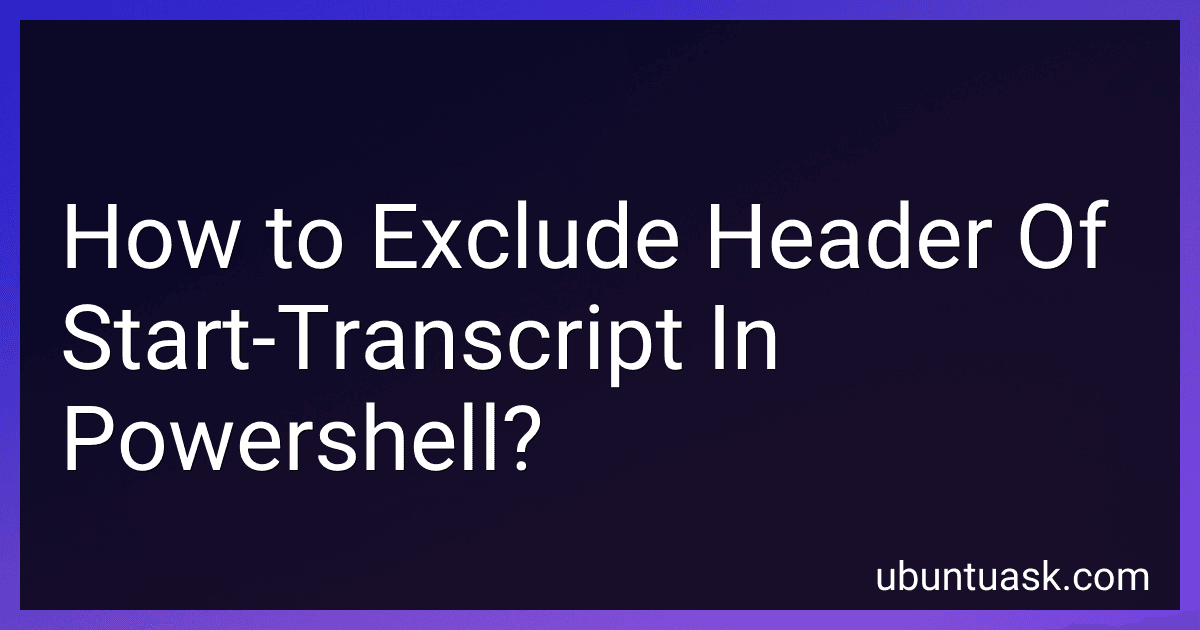 8 min readTo exclude the header of the Start-Transcript output in PowerShell, you can start the transcript but redirect the transcript file output to a new file, skipping the initial lines that contain the header information. First, initiate Start-Transcript to begin recording the session. Then, when you're done with the session or want to iterate over the content, stop the transcript with Stop-Transcript.
8 min readTo exclude the header of the Start-Transcript output in PowerShell, you can start the transcript but redirect the transcript file output to a new file, skipping the initial lines that contain the header information. First, initiate Start-Transcript to begin recording the session. Then, when you're done with the session or want to iterate over the content, stop the transcript with Stop-Transcript.
-
 5 min readManaging the transition from one year to another in PowerShell can involve several considerations, especially if you are handling date-sensitive scripts or logs. Firstly, it might be important to ensure that any date comparisons or calculations account for the change in year. This can be accomplished using PowerShell's built-in date and time cmdlets, such as Get-Date, which can dynamically retrieve current dates and handle transitions smoothly.
5 min readManaging the transition from one year to another in PowerShell can involve several considerations, especially if you are handling date-sensitive scripts or logs. Firstly, it might be important to ensure that any date comparisons or calculations account for the change in year. This can be accomplished using PowerShell's built-in date and time cmdlets, such as Get-Date, which can dynamically retrieve current dates and handle transitions smoothly.
-
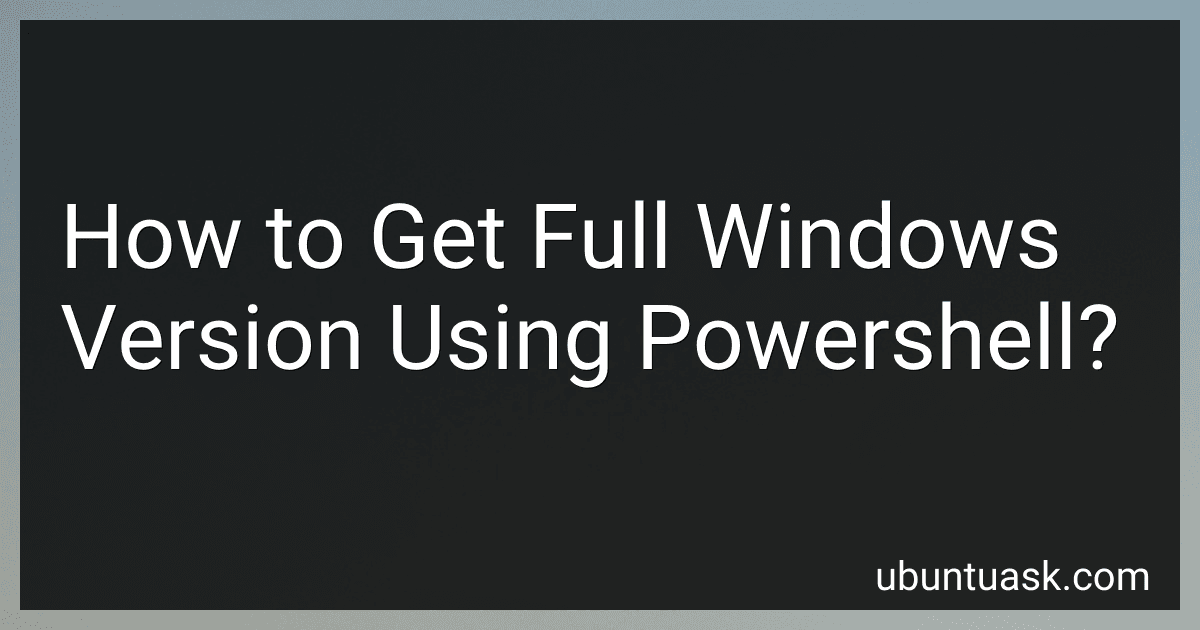 10 min readTo retrieve the full Windows version using PowerShell, you can use the Get-ComputerInfo cmdlet which provides detailed information about the system, including the version of Windows. Specifically, you can extract the Windows version using the WindowsVersion, WindowsBuildLabEx, or WindowsBuildLab properties from the output of Get-ComputerInfo.
10 min readTo retrieve the full Windows version using PowerShell, you can use the Get-ComputerInfo cmdlet which provides detailed information about the system, including the version of Windows. Specifically, you can extract the Windows version using the WindowsVersion, WindowsBuildLabEx, or WindowsBuildLab properties from the output of Get-ComputerInfo.
-
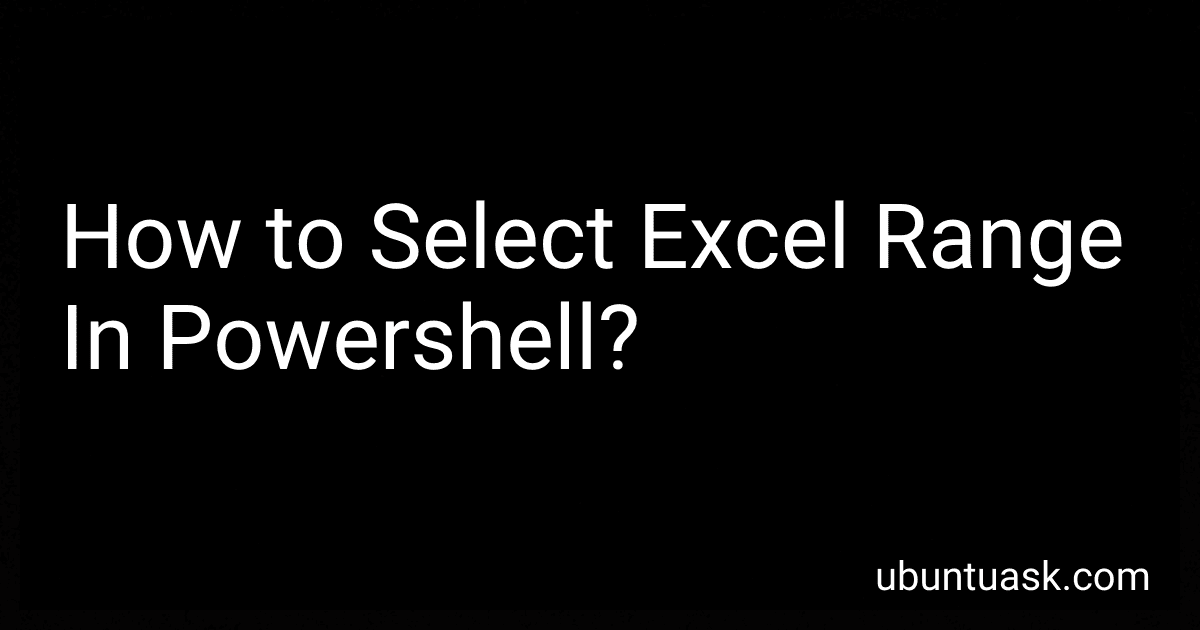 7 min readTo select an Excel range in PowerShell, you first need to automate Excel using the COM object model. Start by creating a new Excel application object and open the desired workbook and worksheet. You can then select a range using the Range property of the worksheet object. For example, if you want to select a specific range like "A1:C10", you can use $worksheet.Range("A1:C10"). To select this range, leverage the Select method on the specified range object.
7 min readTo select an Excel range in PowerShell, you first need to automate Excel using the COM object model. Start by creating a new Excel application object and open the desired workbook and worksheet. You can then select a range using the Range property of the worksheet object. For example, if you want to select a specific range like "A1:C10", you can use $worksheet.Range("A1:C10"). To select this range, leverage the Select method on the specified range object.
-
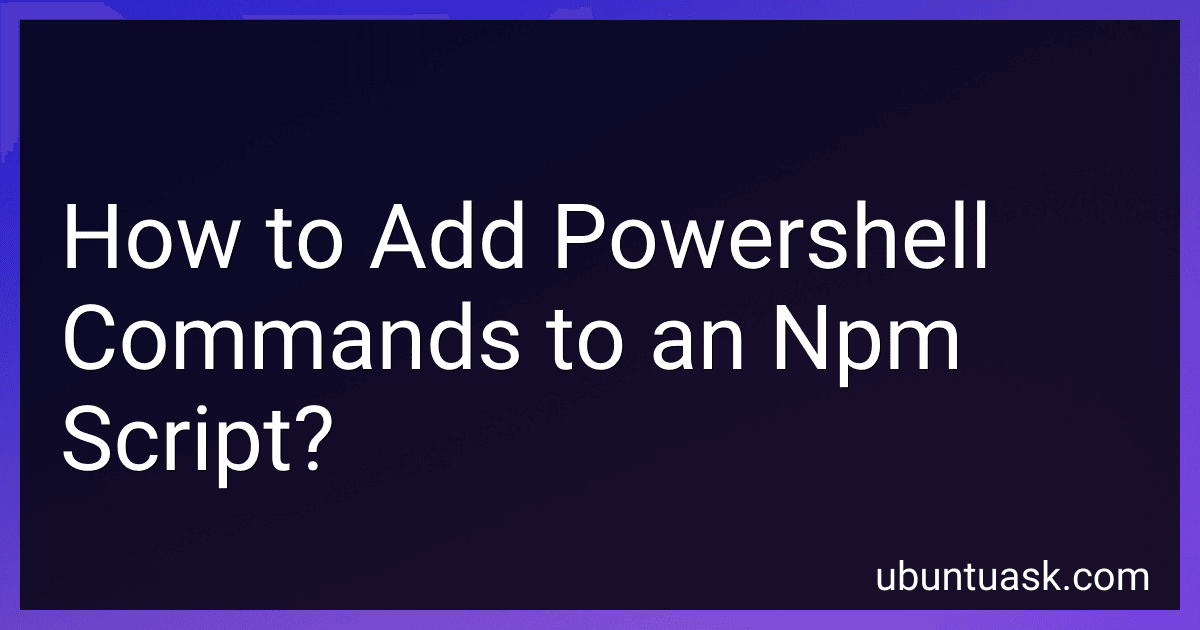 6 min readTo add PowerShell commands to an npm script, you can define the desired command within the "scripts" section of your package.json file. When writing the script, you can combine PowerShell commands directly with Node.js-specific commands or other shell commands by utilizing the appropriate syntax. If you're using a Windows environment, these scripts will be executed with cmd.exe by default.
6 min readTo add PowerShell commands to an npm script, you can define the desired command within the "scripts" section of your package.json file. When writing the script, you can combine PowerShell commands directly with Node.js-specific commands or other shell commands by utilizing the appropriate syntax. If you're using a Windows environment, these scripts will be executed with cmd.exe by default.